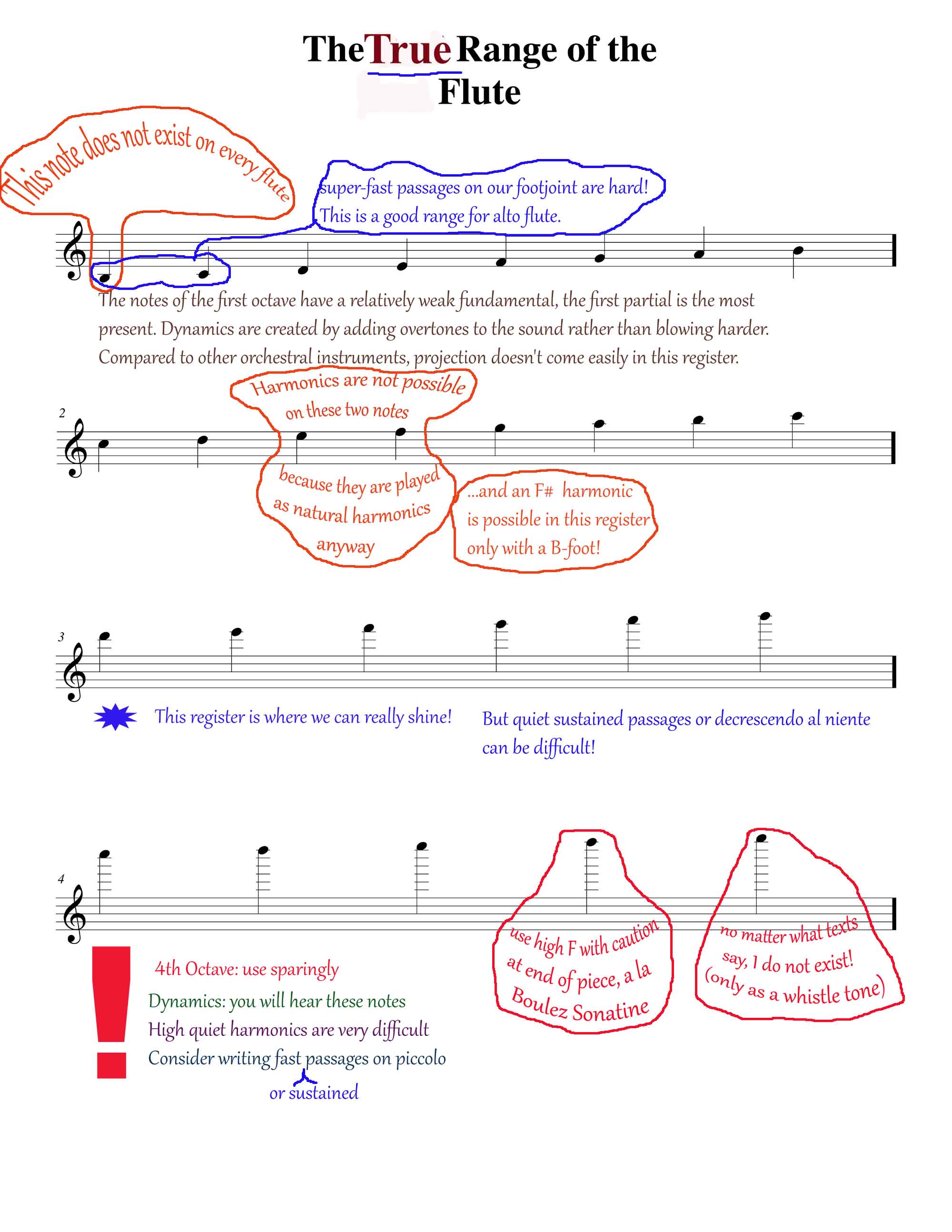Some flutists have a naturally rich low register. For others, high notes come more naturally. Some are blessed with the ease of both. I was a weakey one in the low register for years. The flip side of that was that I could play high and quietly with more ease than many others.
What to do about weakness in the low register? I’ve compiled some advice and exercises that I give to my students (and myself!) over the years.
First of all, make sure your flute is not leaking.
There are two aspects:
1. General weakness = unwanted decrescendo as you descend
2. Forte attacks. Sometimes you may have a good sound down low, but when you are asked to play a short loud note, or start a passage on a low loud note, it doesn’t respond.
For no. 2, forte attacks, Michel Debost gives some great advice in his book The Simple Flute:
*”Finger Tonguing” = a faint percussion of the finger closest to the desired note. Not to be confused with key slaps.
*Play on the middle breath, not a big inhalation
*Hold back and give the sound a very small amount of time so that you hear it
*Let air come through the nose if necessary, so the air speed is not too fast out of the mouth. This will prevent the note from cracking
And from Robert Dick:
*Drop the belly. A trick from brass players, it keeps the center of gravity low
From Peter Lloyd:
*Blow towards the chest
If you can bring all this advice into play, that will start you off. If you really want to generally strengthen your lower register and gain control over all dynamics, you have to make a serious commitment. Have patience, it may take time to develop. It might take months or years before you are really happy with it. But isn’t life a work in progress anyway?
Exercises:
Moyse, Moyse, Moyse, souplesse des sons graves from de la Sonorite (page 10 in my edition). It helps, but only if you really, really do it, and like physical exercise, it pays to play it every day instead of a lot one day and then nothing for a week.
Another exercise I call “Swimming”. There’s almost nothing to it: just take a low note, say D. Take a good but not huge breath and play the note mezzo forte until the breath is done (but don’t squeeze out). Breath in normally, don’t hurry. Repeat this process about 10 times. Why is it swimming? While you are playing the note, you can imagine you are under water and moving forward through sound. You go where there is the most resonance. You really listen, small hisses in the sound, unevenness, a sudden opening, whatever. Let them happen. Just go forward, and when you need a breath, surface like a dolphin and get a breath, then go back in.
You’ll notice by the 10th time probably that the sound has opened up.
You can also make an exercise from the Berio Sequenza. Almost every lesson I give on this piece ends up being a lesson in articulation, especially for the low register. Take the opening gesture, or any low articulated passage in the piece and do the following.
*play legato with focused, not forced, sound. The throat should be open, but not too stretched. Too stretched will interfere with articulation that’s coming up in the next step.
*play with “Ha” articulation. Move the belly, but not too exaggerated. Think more of activating it (and dropping it) rather than jiggling it
*now use the tongue, only as an opening valve, not a sledge hammer. Keep in mind Debost’s comments above.
Then there is the phenomenon of the disappearing low register. Players who don’t normally have problems with low notes encounter this like a bad hair day, there seems to be no explanation. You can wake up and they’re just not there!
*Check your flute, maybe it’s leaking. Maybe there’s a cigarette paper stuck on a pad.
*Gently, gently wipe your lips with a clean tissue. There might be a build-up of dry skin on the lips.
*Some people swear that this happens when there is a drop in atmospheric pressure. Is it about to rain? Maybe that’s your excuse.
Any other advice or observations? I’d like to hear them.



